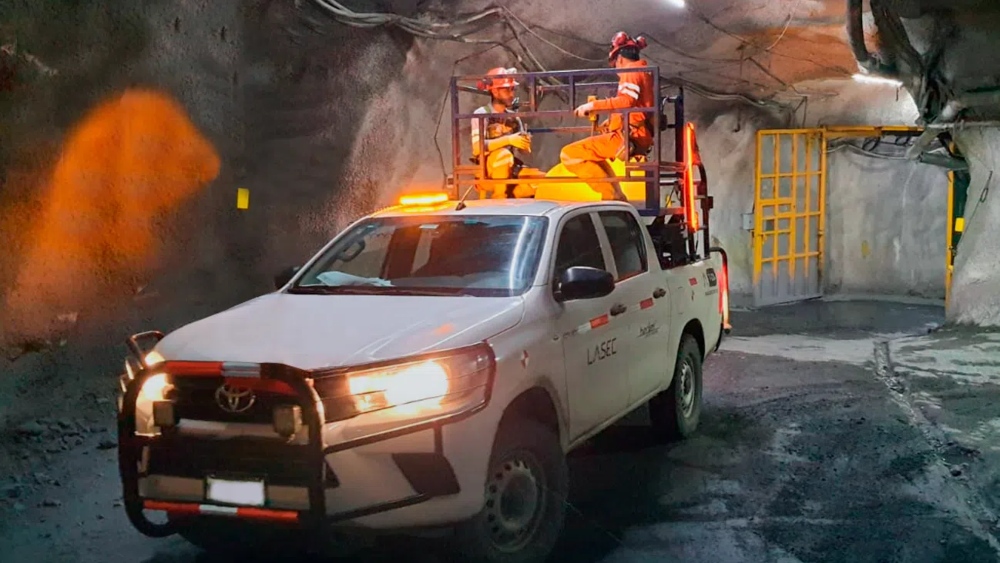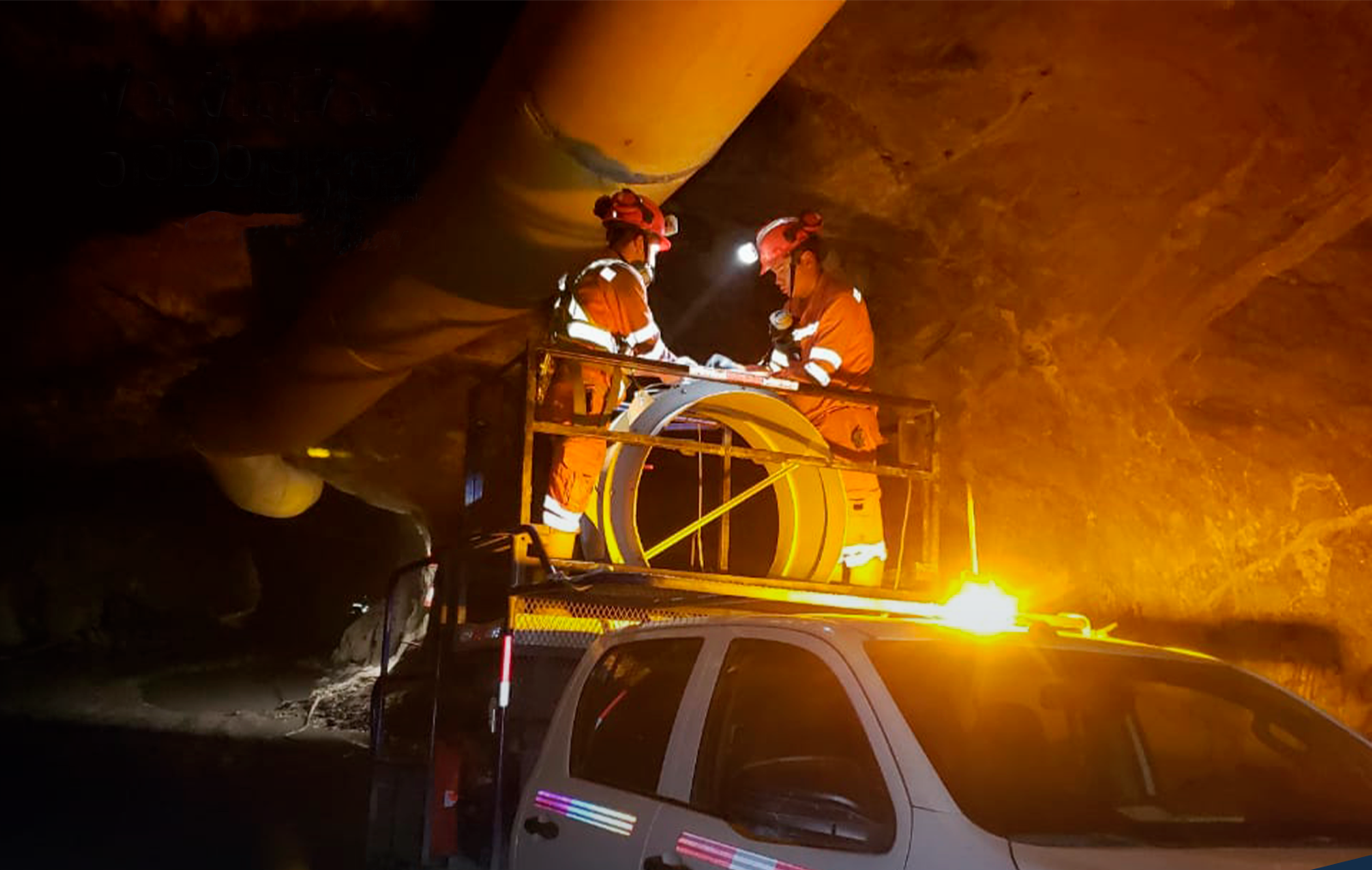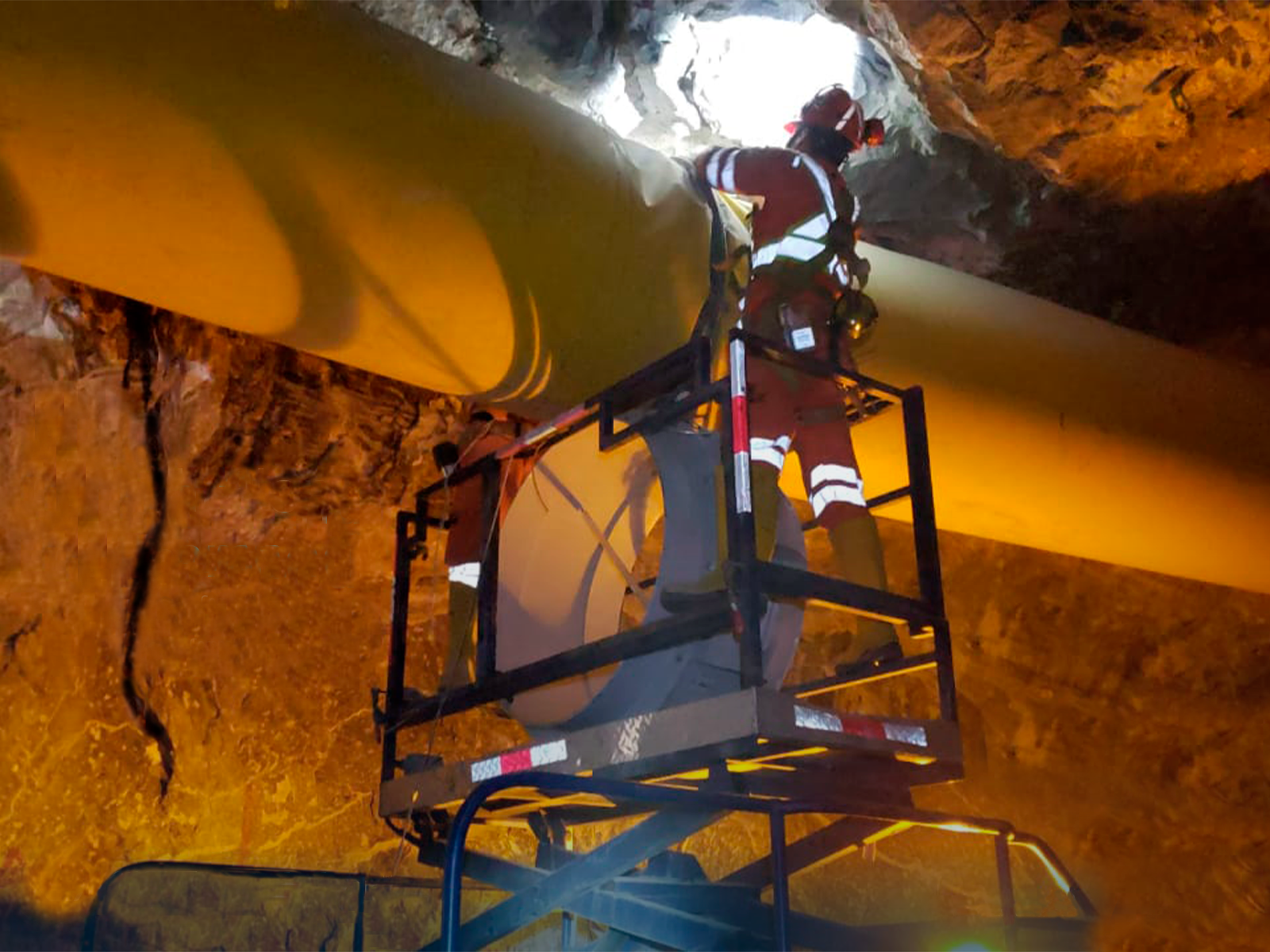Access to fresh air in the underground environment is essential to any mining operations. With ventilation systems being one of the largest costs that mining companies bear, it is vital that ventilation systems operate as efficiently as possible with minimal downtime. In the ideal scenario, ventilation would be first provided to those areas where the concentration of people and equipment is the greatest and unoccupied or abandoned areas would have reduced ventilation flow. This approach has led to the adoption of Ventilation on Demand (VoD) systems.
Robust, reliable, and accurate personnel and asset tracking is pivotal to effective Ventilation on Demand systems. Real-time tracking of personnel and vehicles allows for a VoD system to prioritize airflow to those areas that need it the most. A proper VoD system requires a highly reliable stream of data from a robust tagging and tracking system. A good tagging and tracking system will feature high-precision tracking which involves strategically placed tag-readers. These tag readers will be instrumental in relaying personnel, vehicle, and other heavy equipment’s location information to surface, which can then be used to automatically run ventilation systems in a specific area, and even adjust fan-speeds for flow requirements depending on what vehicles are in the area and/or how many personnel are in the area. To elaborate – vehicles can be fitted with tags that include vehicle-specific data with regards to both emissions and oxygen requirements for the proper function of their engines, and proper ventilation of their exhaust fumes. These values coupled with a CFM airflow requirement per person can then be used to activate a VoD system and adjust its speed.
Measuring the number of people and vehicles in an area is not the only important aspect of VoD systems. It is equally vital to measure the concentration of gases in work areas and throughfares. The build-up of dangerous or toxic gases can prove to be fatal to workers and an effective VoD system will identify the presence of undesirable gases and will act before the situation becomes dangerous, allowing personnel to perform daily tasks underground safely and efficiently.
The absence of dangerous gases at one moment is not a guarantee that the area will always be safe. By the very nature of mining, new ground is continuously being broken to access and expose ore bodies. This process often results in the release of noxious gases, such as methane and sulphur dioxide. Moreover, the processes used entail the use of machinery that release harmful gases. For example, diesel and used to transport people and equipment release carbon monoxide, carbon dioxide, and gaseous hydrocarbons. The concentration of these gases in an area can swiftly escalate and pose a threat to human life.
The dangerous mixture of different gases has varying effects on human health and mine-safety. With strong safety regulations, many mines have used the smartsense® system to reduce the time interval before workers can safely return to the face after a blast when previously having to wait a predetermined length of time prior to returning inside to take the necessary gas readings. State of the art Gas and Airflow Monitors should be installed in key locations to provide real-time sensor data which can be used to determine the demand for ventilation and trigger operation based on a pre-configured set of conditions. Testing and Maintenance schedules then become a crucial part of operations to minimize down-time and to keep personnel safe with systems running at optimal efficiency.
Each Gas Monitor can simultaneously sense multiple gases, including oxygen, methane, carbon dioxide, carbon monoxide, hydrogen sulfide and nitrogen dioxide, to name a few. These devices also have integral safety features including the capacity to warn all miners of the presence of harmful gases. This can be done both locally; by using both visible and audible alarms, and remotely; through the use of onboard digital and analog I/O, which can be transferred via Wi-Fi or RS-485, triggering personnel to evacuate the area until proper measures have been taken to address the situation, giving it the potential to save lives.
The mining sector requires intelligent systems to protect its employees and valuable assets. Because of this shifting landscape, Becker Mining Systems has developed a collection of products that will provide clients with automated ventilation control systems, and gas monitoring packages that will help run a safe and efficient operation. An effective software package with an intuitive interface should be implemented for quick and easy interpretation of data being collected from Personnel, Instruments, Equipment, and Vehicles. In the Industry 4.0 era, we are gathering large quantities of data over networks with negligible latency, putting operational visibility and control at the forefront. A software package to consider here would be Smartflow®; a system that integrates state-of-the-art technological solutions, based on the identification of all the operational flow that exists in areas of interest in real time. It integrates the monitoring of communication networks and sensor signals to achieve the concentration of information in a single system, contributing to the continuous improvement of production processes, increasing safety levels, and sustainable development. This software package provides users with a tool to effectively extract useful information from the constant flow of raw data, synthesizing new datapoints, and putting this information to use by configuring notifications, generating alarms, or reviewing operations to realize new efficiencies.
Of course, all this data requires a fast and reliable pipe to travel. The faster the network upon which the VoD telemetry is transferred, the lower the latency which yields fewer delays, and a more efficient system – this makes the smartcom® LTE Network the perfect candidate for low-latency data-intensive applications. With a similar layout to existing Leaky Feeder infrastructure, smartcom® long-term evolution (LTE) can provide high speed data at all levels of the mine using a hybrid of Ericsson™ hardware, radiating cable, and accompanying technology for ensured quality. Apart from Ventilation on Demand, this network can be used for other data-hungry applications such as: autonomous vehicles, mission-critical communications, real-time asset tracking, vehicle telemetry, instrumentation telemetry, heavy equipment telemetry, video conferencing for remote troubleshooting, and other remote applications.
Combining Smartflow®, smartsense®, and smartcom® LTE to automate ventilation controls is an efficient method that provides miners the ability to customize a proper monitoring solution for any mining operation. With configurable software suites, modular equipment and various network options Becker Mining Systems is poised to provide tailored turnkey VoD solutions.






